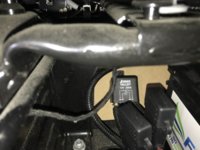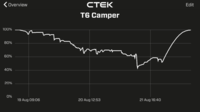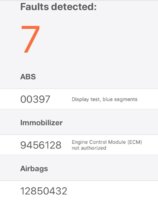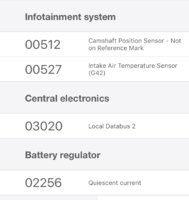I have recently come to learn to my expense (new leisure battery required, prematurely imo) that my camper conversion has a traditional split charger relay  , rather than a DC
, rather than a DC C charger that would be best suited to the T6 with smart alternator. I have tried to suggest to the convertor (award winning) that the they should amend their approach, but without success (after all vw still use the split relay on Cali's....etc.).
C charger that would be best suited to the T6 with smart alternator. I have tried to suggest to the convertor (award winning) that the they should amend their approach, but without success (after all vw still use the split relay on Cali's....etc.).
I am looking at fitting a DC C charger, but in the short term I am hoping that someone here with superior/expert knowledge can clarify something for me (please excuse any poor language; I am not fully electrical conversant!).
C charger, but in the short term I am hoping that someone here with superior/expert knowledge can clarify something for me (please excuse any poor language; I am not fully electrical conversant!).
As I understand it the leisure battery is never going to achieve more than 80% from the alternator / current split relay. But I can fully charge the leisure battery from the EHU or solar when stationary.
But as the relay works in both directions my question is whether the leisure battery will in effect 'loose' the full charge as soon as the van is driven? When driving will the leisure battery in effect match the vehicle battery state of charge (ie. no more than 80% etc...)?
To put the question a different way, is there any point in fully charging the leisure battery whilst at home, or will its charge level have dropped anyway to 80% by the time I get to site?
(I appreciate that fully charging at home may improve the leisure battery condition and prolong its life expectancy).
I am looking at fitting a DC
As I understand it the leisure battery is never going to achieve more than 80% from the alternator / current split relay. But I can fully charge the leisure battery from the EHU or solar when stationary.
But as the relay works in both directions my question is whether the leisure battery will in effect 'loose' the full charge as soon as the van is driven? When driving will the leisure battery in effect match the vehicle battery state of charge (ie. no more than 80% etc...)?
To put the question a different way, is there any point in fully charging the leisure battery whilst at home, or will its charge level have dropped anyway to 80% by the time I get to site?
(I appreciate that fully charging at home may improve the leisure battery condition and prolong its life expectancy).




